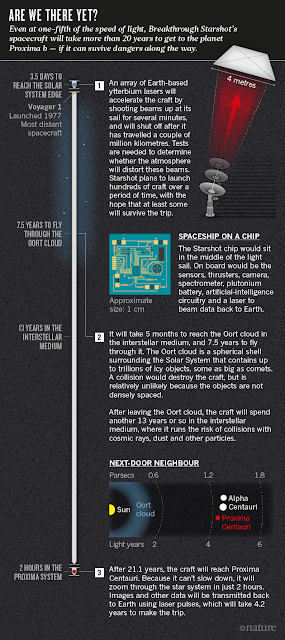
Breaking News
 The Fear-Mongering Rackets of the US National-Security State
The Fear-Mongering Rackets of the US National-Security State
 Men Of The West: We Are At War
Men Of The West: We Are At War
 FDA Chief Says No Solid Evidence Supporting Hepatitis B Vaccine At Birth
FDA Chief Says No Solid Evidence Supporting Hepatitis B Vaccine At Birth
Evergreen, Colorado: Another Killing Zone in America
Top Tech News
 Tesla Megapack Keynote LIVE - TESLA is Making Transformers !!
Tesla Megapack Keynote LIVE - TESLA is Making Transformers !!
 Methylene chloride (CH2Cl?) and acetone (C?H?O) create a powerful paint remover...
Methylene chloride (CH2Cl?) and acetone (C?H?O) create a powerful paint remover...
 Engineer Builds His Own X-Ray After Hospital Charges Him $69K
Engineer Builds His Own X-Ray After Hospital Charges Him $69K
 Researchers create 2D nanomaterials with up to nine metals for extreme conditions
Researchers create 2D nanomaterials with up to nine metals for extreme conditions
 The Evolution of Electric Motors: From Bulky to Lightweight, Efficient Powerhouses
The Evolution of Electric Motors: From Bulky to Lightweight, Efficient Powerhouses
 3D-Printing 'Glue Gun' Can Repair Bone Fractures During Surgery Filling-in the Gaps Around..
3D-Printing 'Glue Gun' Can Repair Bone Fractures During Surgery Filling-in the Gaps Around..
 Kevlar-like EV battery material dissolves after use to recycle itself
Kevlar-like EV battery material dissolves after use to recycle itself
 Laser connects plane and satellite in breakthrough air-to-space link
Laser connects plane and satellite in breakthrough air-to-space link
 Lucid Motors' World-Leading Electric Powertrain Breakdown with Emad Dlala and Eric Bach
Lucid Motors' World-Leading Electric Powertrain Breakdown with Emad Dlala and Eric Bach
 Murder, UFOs & Antigravity Tech -- What's Really Happening at Huntsville, Alabama's Space Po
Murder, UFOs & Antigravity Tech -- What's Really Happening at Huntsville, Alabama's Space Po
$100 million Breakthrough Starshot small interstellar probe project will start...

The Breakthrough Starshot is an effort backed by US$100 million from Russian investor Yuri Milner to vastly accelerate research and development of an interstellar space probe.
Leaders of the mission plan to start funding technology-development projects within months, with the aim of launching a fleet of tiny, laser-propelled probes in the next 20 years. The effort would ultimately cost about $10 billion, leaders hope, and take another 20 years to reach Alpha Centauri.
The first truly challenging step in any mission such as Breakthrough Starshot is to accelerate the spacecraft to interstellar velocities.
Researchers at the Japan Aerospace Exploration Agency (JAXA) and the Planetary Society have deployed solar sails in space. An advanced solar sail could theoretically reach about 13% of the speed of light if it could withstand high temperatures and was ultrathin and performed a gravitational slingshot move around the sun that passed within a couple of solar radii. The materials for such a sail do not yet exist (at least in sufficient quantities).
NOTE - a recent paper shows how a gravity slingshot could be used to decelerate an interstellar probe travelling at 4.6% of lightspeed into a parking orbit in a target solar system
A Laser propelled sail has not been demonstrated in space and is required for the required speeds of about 25% of light speed.
The Starshot team plans to use conventional rockets to send its probes into orbit. Then a 100-gigawatt laser array on Earth would fire continuously at the sail for several minutes, long enough to accelerate it to 60,000 kilometers per second
Starshot leaders acknowledge that they are counting on breakthroughs from the laser industry. One hundred gigawatts will be a million times more powerful than today's biggest continuous lasers, which put out hundreds of kilowatts. One way around that gap would be to combine light from hundreds of millions of less powerful laser beams across an array that is at least a kilometer wide. But the beams would all need to be brought into phase with each other so that their light waves add rather than cancel each other out — making the lasers one of the mission technologies that requires the most development work.
Whatever the design, the sail must be strong. A 100-gigawatt laser beam will hit it hard, generating tens of thousands of times the acceleration that an object feels on Earth owing to gravity. Artillery shells have survived such forces in military tests, Worden notes, but for less than a second — not the several minutes for which the laser will pound the device.
Starshot's plan would build strength in numbers. The spacecraft would be small and relatively low-cost, so the project could launch one or more every day, and even afford to lose some of them.
Development of the probes will proceed in stages, says Worden. The first step is to build a prototype system that would accelerate to perhaps 1,000 kilometers per second — less than 2% of the speed planned for Starshot — for a total cost between $500 million and $1 billion.
The craft
The Starshot craft will look like nothing ever launched into space. Imagine a small collection of electronics, sensors, thrusters, cameras and a battery on a roughly one-centimetre-wide chip in the centre of a circular or square sail, roughly 4 metres wide — all weighing just a gram. The lighter the craft, the faster a given force can accelerate it.
Here is a 68 page roadmap by Philip Lubin of the University of Santa Barbara for developing laser pushed sails.
Lubin's designs would enable wafersats to reach 25% of lightspeed and a 100 ton spaceship to reach 1000 kilometers per second.
Nextbigfuture notes that for manned missions going beyond 1000 km per second, the wafer chips could be accelerated at a manned ship with a pusher plate (like the Project Orion ship) but the energy would be kinetic and not nuclear.





